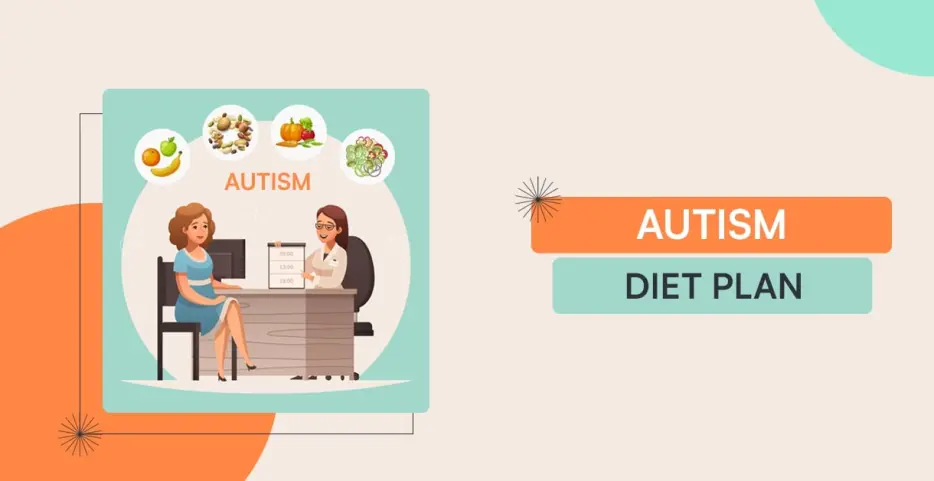
Parents of children with autism are learning that food choices can help their children become healthier and reach their full potential. In addition to traditional behavioral therapy and other proven medical treatments, autism pediatricians and nutritionists increasingly recommend that parents implement an autism diet, autism-specific nutrition, and specialized supplementation.

Why is the Autism Diet Essential to Implement?
Doctors now recognize that the bodies of children with autism are unique and require specific care, including special enzymes for digestion, medical treatment for yeast infection and other common conditions found during testing, attention to digestive issues, the special dietary requirement (autism diet), nutrient and fatty acid supplementation, behavioral therapy, and more. The most profound benefit comes from a multifaceted treatment plan that balances physician-recommended biomedical approaches and a nutrition-centered autism diet. When parents correctly implement a specific autism diet, improvements in gastrointestinal problems (including diarrhea and constipation), language, learning, focus, attention, eye contact, behavior, sleep difficulties, toilet training, skin rash/eczema, and body pain have been observed. Since every child is unique, improvement will vary. Most parents begin with the GF/CF diet, as children on the spectrum are usually highly allergic (or sensitive) to gluten and casein, the proteins found in wheat, flour, and milk. These food intolerances are known to impact body and brain function. Even if a child tested negative for an allergic condition, studies indicated that removing gluten and casein could help children's physical and cognitive condition in notable ways (as there can be many different adverse reactions to these foods). It is essential to understand that these diets are customized food-focused nutritional intervention strategies for autism. Changing from not considering the impact of food intake (the standard American diet) to giving specialized attention (a nutrition-centered diet) is the key to promoting systemic healing. This is especially true for children with impaired digestive and immune systems (common in illnesses such as autism, asthma, allergies, and ADHD). All autism diets involve the removal of problematic foods and substances and the addition of easier-to-digest, nutrient-dense foods that support these symptoms.

Initial Steps for Successful Autism Diet Implementation
- Explore, research, and experiment: Before removing any foods from the diet, identify GF/CF or alternatives. Find choices your child likes so that when you remove the problematic foods later, you will already have the option they’ll eat—this will smooth the transition.
- Build your diet resources (books, cookbooks, videos, etc.) to become familiar with the diet and what foods are allowed/not allowed.
- Watch instructional videos – many are available on YouTube. Join groups with others implementing autism diets.
- Create a meal plan: Develop a list of diet-compliant foods and snacks your child will eat or that you would like to try making. Layout a schedule of what you’ll prepare and when. Remember to focus on organic foods when you can and avoid canned or processed foods with unnatural ingredients and colors.
- Do foundational grocery shopping regularly: Shop for foods according to your meal plan, and purchase diet-compliant flour, milk, and other cooking staples or ingredients to make the basics. A meal plan will make shopping easy, and keeping your shelves stocked will allow you to have food on hand when your kids are hungry.
- Begin implementation gently: Removing problematic foods for several days or weeks. When beginning GF/CF, eliminate one group at a time. Start by removing casein from the diet for two weeks; then remove gluten, and continue for at least three to six months.
- As you begin the diet, avoid foods that are difficult to digest. Don’t overdo the processed and sugary substitutes; for example, avoid adding high-sugar foods to GF/CF cookies and candy just because they’re off/cf. Sugar feeds yeast, and avoiding candy is the best if your child is prone to yeast growth.
GF/CF Meal Ideas for Children with Autism

Breakfast:
Always try to serve a portion of the protein of egg at breakfast unless breakfast already contains fat and proteins.
- Eggs (scrambled, omelet, or any style without milk)
- Gluten-free/casein-free waffle or pancake
- Gluten-free/casein-free toast with nut butter or ghee and coconut oil
- Organic fruit smoothie: Non-dairy milk, frozen fruit (such as blueberries, bananas, peaches, and pears), honey, protein powder
Lunch/Dinner:
Include protein, vegetables, and some fat.
- Organic Vegetables
- Stand or boiled vegetables with ghee or coconut oil
- Stir-fry vegetables
- Salad or carrot sticks
- Raw sauerkraut
- Fresh fruit
- Gluten-free pasta
- Sweet potato or potato fries
- Rice or quinoa
- Stews and soups – purred or broth soup
Snacks:
- Celery or apple with nut butter
- Vegetables with hummus
- Potato chips or other chips (ideally with guacamole or other healthy dips)
- Carrot chips
- Vegetable juice (freshly made)
Follow the meal mentioned above plans, and you will soon see the difference in your child.
Conclusion
Implementing an autism diet can significantly improve the well-being of children on the spectrum by addressing common issues like gastrointestinal discomfort, behavioral challenges, and cognitive function. The GF/CF diet, along with nutrient-dense foods and proper supplementation, can support overall health, digestion, and brain function. Each child’s response may vary, but with careful planning, research, and gradual introduction, parents can create a successful dietary strategy that enhances their child's development and quality of life. Always consult with healthcare professionals to ensure the diet meets your child’s specific needs.


.png)


